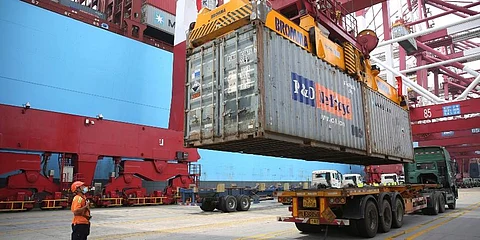Import swap and vying exports, two to tango
India’s exports and imports fell in October, but the trade deficit widened, with exports contracting sharply by 16.6%—the weakest print since March 2021. Worryingly, the export contraction was broad-based, with almost all principal export items declining, while import growth moderated only in half of the 30 chief items. In effect, the merchandise trade deficit stood at $27 billion, taking the cumulative total to $173 billion as against $94 billion last year. It’s no secret that the trade deficit has been ballooning in recent months amid elevated commodity prices and a slowing global economy.
All bets are now on declining global commodity prices, especially oil, to lighten the import bill and shrink the deficit. Although cumulative numbers are yet to deviate significantly from the annual target, it’s feared that CAD will breach 3.5% of GDP this fiscal. However, some believe the concerns are unfounded. In Q1, CAD was expected to breach 3.8% of GDP but settled at 2.8%, thanks to countercyclical buffers via service exports and remittances. If the trend continues, CAD might as well stay below the 3% finish line this fiscal.
If the rising goods trade deficit is flashing danger signs for CAD, services trade that reached an all-time high in September is the brightest bulb in the box. Crucially, software exports have been rising, with the share of offsite exports touching 88.8% in FY22 from 82.8% five years ago. A weakening rupee is also helping, as software exports are estimated to increase by $250 million for every rupee depreciation. If the exchange rate pass-through is pegged at 10% for CAD, inflation and growth, it’s significantly stronger at 35% for software exports. In other words, as SBI research noted, the negative impact of oil price shock on CAD, inflation and growth gets neutralised by software exports, bumped up by rupee depreciation.
That said, calls for import substitution rise each time exports dip. In fact, in the 2022 Budget alone, the government raised tariffs on 1,243 items accounting for 16% of imports, which are yet to yield. Thanks to globalisation, supply chains, and the WTO, the nature of trade has changed so dramatically that exports are simply unthinkable without imports. It means, more than tariff barriers, we need a long-term strategy, with the government devoting energy to measures like the Production Linked Incentives to boost domestic capacities, which in turn help export competitiveness.

